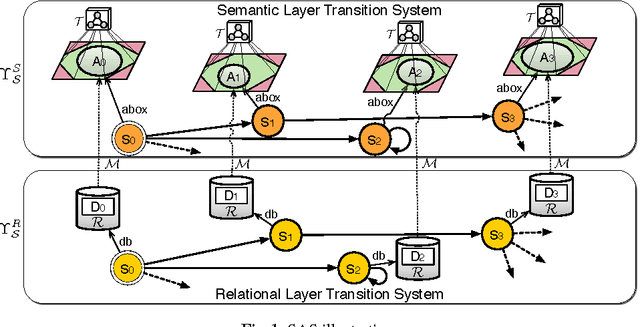Ario Santoso
Specification-Driven Predictive Business Process Monitoring
Apr 20, 2019



Abstract:Predictive analysis in business process monitoring aims at forecasting the future information of a running business process. The prediction is typically made based on the model extracted from historical process execution logs (event logs). In practice, different business domains might require different kinds of predictions. Hence, it is important to have a means for properly specifying the desired prediction tasks, and a mechanism to deal with these various prediction tasks. Although there have been many studies in this area, they mostly focus on a specific prediction task. This work introduces a language for specifying the desired prediction tasks, and this language allows us to express various kinds of prediction tasks. This work also presents a mechanism for automatically creating the corresponding prediction model based on the given specification. Differently from previous studies, instead of focusing on a particular prediction task, we present an approach to deal with various prediction tasks based on the given specification of the desired prediction tasks. We also provide an implementation of the approach which is used to conduct experiments using real-life event logs.
Specification-Driven Multi-Perspective Predictive Business Process Monitoring (Extended Version)
Jul 01, 2018



Abstract:Predictive analysis in business process monitoring aims at forecasting the future information of a running business process. The prediction is typically made based on the model extracted from historical process execution logs (event logs). In practice, different business domains might require different kinds of predictions. Hence, it is important to have a means for properly specifying the desired prediction tasks, and a mechanism to deal with these various prediction tasks. Although there have been many studies in this area, they mostly focus on a specific prediction task. This work introduces a language for specifying the desired prediction tasks, and this language allows us to express various kinds of prediction tasks. This work also presents a mechanism for automatically creating the corresponding prediction model based on the given specification. Thus, different from previous studies, our approach enables us to deal with various kinds of prediction tasks based on the given specification. A prototype implementing our approach has been developed and experiments using a real-life event log have been conducted.
Verification of Generalized Inconsistency-Aware Knowledge and Action Bases (Extended Version)
Jun 04, 2015Abstract:Knowledge and Action Bases (KABs) have been put forward as a semantically rich representation of a domain, using a DL KB to account for its static aspects, and actions to evolve its extensional part over time, possibly introducing new objects. Recently, KABs have been extended to manage inconsistency, with ad-hoc verification techniques geared towards specific semantics. This work provides a twofold contribution along this line of research. On the one hand, we enrich KABs with a high-level, compact action language inspired by Golog, obtaining so called Golog-KABs (GKABs). On the other hand, we introduce a parametric execution semantics for GKABs, so as to elegantly accomodate a plethora of inconsistency-aware semantics based on the notion of repair. We then provide several reductions for the verification of sophisticated first-order temporal properties over inconsistency-aware GKABs, and show that it can be addressed using known techniques, developed for standard KABs.
Adding Context to Knowledge and Action Bases
Dec 26, 2014Abstract:Knowledge and Action Bases (KABs) have been recently proposed as a formal framework to capture the dynamics of systems which manipulate Description Logic (DL) Knowledge Bases (KBs) through action execution. In this work, we enrich the KAB setting with contextual information, making use of different context dimensions. On the one hand, context is determined by the environment using context-changing actions that make use of the current state of the KB and the current context. On the other hand, it affects the set of TBox assertions that are relevant at each time point, and that have to be considered when processing queries posed over the KAB. Here we extend to our enriched setting the results on verification of rich temporal properties expressed in mu-calculus, which had been established for standard KABs. Specifically, we show that under a run-boundedness condition, verification stays decidable.
Verification of Semantically-Enhanced Artifact Systems (Extended Version)
Aug 28, 2013



Abstract:Artifact-Centric systems have emerged in the last years as a suitable framework to model business-relevant entities, by combining their static and dynamic aspects. In particular, the Guard-Stage-Milestone (GSM) approach has been recently proposed to model artifacts and their lifecycle in a declarative way. In this paper, we enhance GSM with a Semantic Layer, constituted by a full-fledged OWL 2 QL ontology linked to the artifact information models through mapping specifications. The ontology provides a conceptual view of the domain under study, and allows one to understand the evolution of the artifact system at a higher level of abstraction. In this setting, we present a technique to specify temporal properties expressed over the Semantic Layer, and verify them according to the evolution in the underlying GSM model. This technique has been implemented in a tool that exploits state-of-the-art ontology-based data access technologies to manipulate the temporal properties according to the ontology and the mappings, and that relies on the GSMC model checker for verification.
Verification of Inconsistency-Aware Knowledge and Action Bases (Extended Version)
Apr 23, 2013Abstract:Description Logic Knowledge and Action Bases (KABs) have been recently introduced as a mechanism that provides a semantically rich representation of the information on the domain of interest in terms of a DL KB and a set of actions to change such information over time, possibly introducing new objects. In this setting, decidability of verification of sophisticated temporal properties over KABs, expressed in a variant of first-order mu-calculus, has been shown. However, the established framework treats inconsistency in a simplistic way, by rejecting inconsistent states produced through action execution. We address this problem by showing how inconsistency handling based on the notion of repairs can be integrated into KABs, resorting to inconsistency-tolerant semantics. In this setting, we establish decidability and complexity of verification.
 Add to Chrome
Add to Chrome Add to Firefox
Add to Firefox Add to Edge
Add to Edge